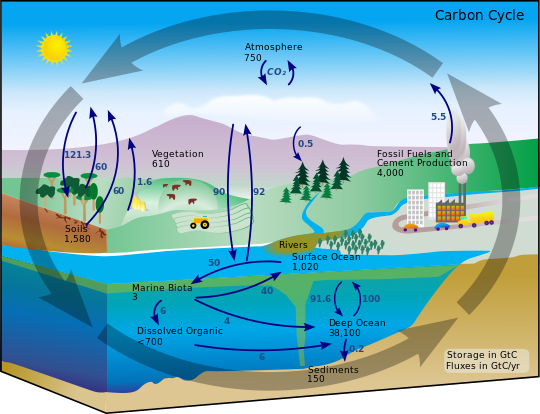
The carbon cycle is a natural cycle in which carbon is cycled through the Earth. It details the shifts between the major carbon resevoirs, which include sediment, the ocean, the terrestrial biosphere, the atmosphere, the crust and the mantle. In taiga, large forests are a major reducer of atmospheric carbon, which trees use in respiration. Taiga has the largest resevoirs of carbon in the world, both in its forests and peat bogs. Also, as there are few major urban areas in taiga, the release of carbon by burning fossil fuels is relatively low. However, many locations, such as Alaska, are mined for their fossil fuels, causing carbon to be taken out of the ground. Another cause of carbon release is volcanoes, which are common in southern Alaska and Iceland. These put carbon in the crust and mantle into the atmosphere.
61°14'33.25"N
113° 4'39.88"W
No comments:
Post a Comment